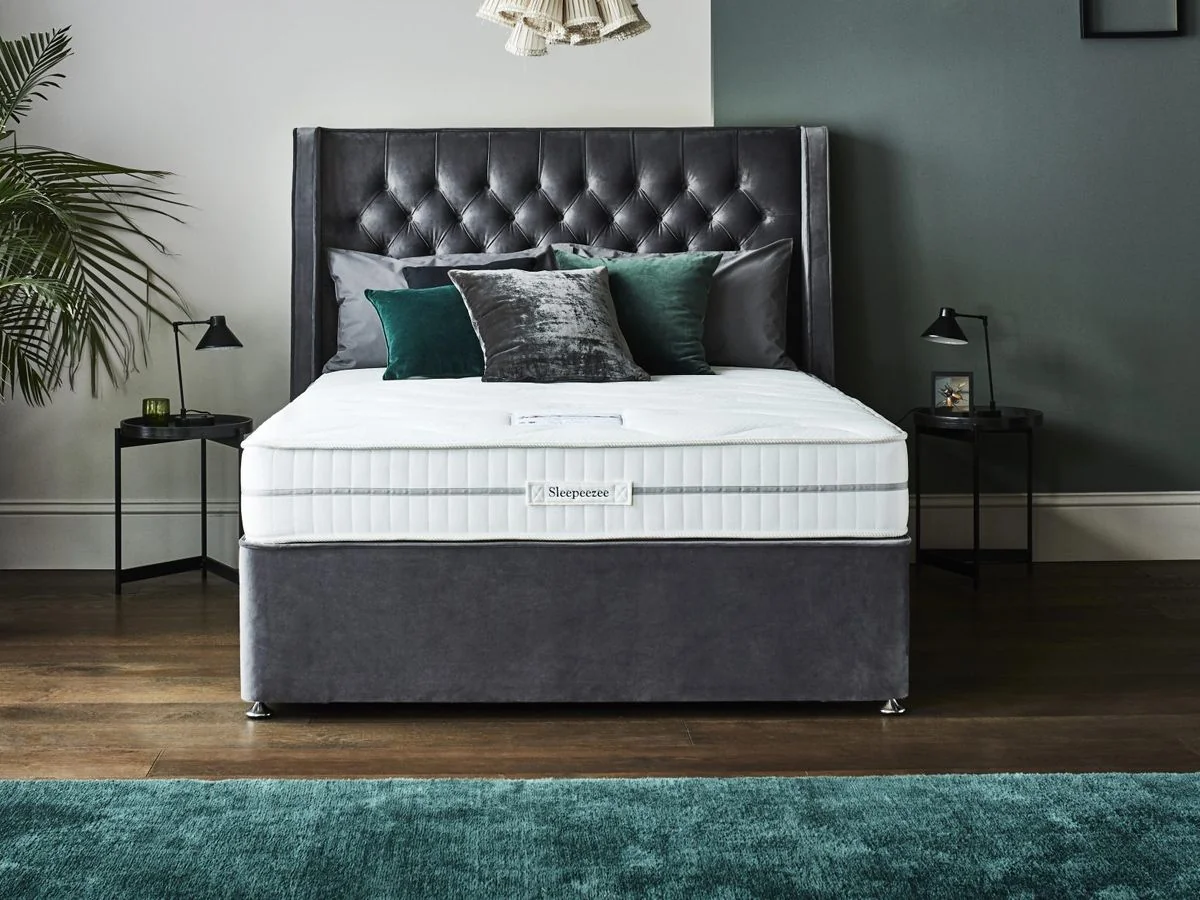Free UK Delivery*
0% Finance Available
Old Bed & Mattress
Sleep Talk Blog, Bed and Mattress Guides
Solid versus Sprung Divan Base
While most divan bases have a solid MDF mattress platform, some have a sprung platform consisting of springs sewn into fabric.
The critical difference is that solid bases put the onus on the mattress, while sprung bases provide a layer of bounciness underneath the mattress.
The difference this makes to how a bed feels depends on the mattress's thickness, firmness, and technology. Sprung bases improve the feel of pure foam mattresses but can make spring mattresses feel wishy-washy.
We'll explain more below.
What is a solid divan base?
A solid divan base is made from a solid sheet of material, usually a medium-density fibreboard (MDF). MDF is an engineered wood product that forms wood fibres into panels using wax and resin binders.
The result is a dense, flat, rigid panel that provides firm, consistent support across the entire surface. Solid MDF divan bases provide a stable foundation for the mattress but without any 'give' or bounce. All the comfort and support comes from the mattress itself.
Solid bases are simple in design and tend to cost less than sprung options. They are also compatible with all mattress types, including memory foam, latex, hybrid, and pocket sprung. The solid base lets you feel the maximum benefits of the mattress technology.
Solid base pros:
- Provides firm, rigid support for all mattress types.
- Simple, low-cost construction.
- Durable and long-lasting.
Solid base cons:
- They can reveal the limitations of thin mattresses.
- They can feel hard without a thick mattress.

What is a sprung divan base?
A sprung divan base contains springs rather than a rigid panel. The springs are usually arranged in rows and enclosed in a fabric casing. The fabric is stretched across the base unit to provide tension and suspend the springs.
Sprung bases add a cushioning layer between the mattress and the rigid base frame. The springs compress to support the areas of your body that press down the most, such as your hips and shoulders.
The springs also add bounce and responsiveness. This can enhance the comfort of a foam mattress. However, a sprung base could make the bed feel excessively springy paired with an already bouncy pocket spring mattress.

Sprung divan bases tend to cost more than solid versions. They also have a shorter lifespan, as the springs can lose tension over time or break. However, they provide excellent comfort for pure foam and thicker spring mattresses.
Sprung base pros:
- Adds softness and bounce.
- Improves the responsiveness of firm foam mattresses.
- Bouncier construction aids mobility (ideal for older people).
Sprung base cons:
- They are more expensive than solid bases.
- They may make spring mattresses too bouncy.
- Springs may sag, weaken, and fail over time.
Choosing the best divan base for your mattress
Solid bases are the best choice for most mattresses and sleepers. The rigid panel provides stable support, benefiting you from the mattress technology above it. Solid bases work well with spring, latex, memory foam, and hybrid mattresses.
The exception is for thin, pure foam mattresses, especially budget foam mattresses with minimal comfort layers. The solid base can make these mattresses feel excessively firm and uncomfortable – which is where sprung bases come in.

In this case, adding a sprung base can significantly improve mattress comfort and extend the mattress's lifespan. The springs provide essential bounce and cushioning that a bare foam mattress lacks.
However, a sprung base with a pocket sprung or hybrid mattress can create an uncomfortable bed, with the combined springiness becoming excessive and undermining the mattress support. Stick with a rigid solid base for these types of mattresses.
So, in summary, you can't go wrong with a high-quality solid divan base for most mattress types, including popular hybrid and pocket spring products. Only choose a sprung base if you have a firm foam mattress and want to soften the feel.

